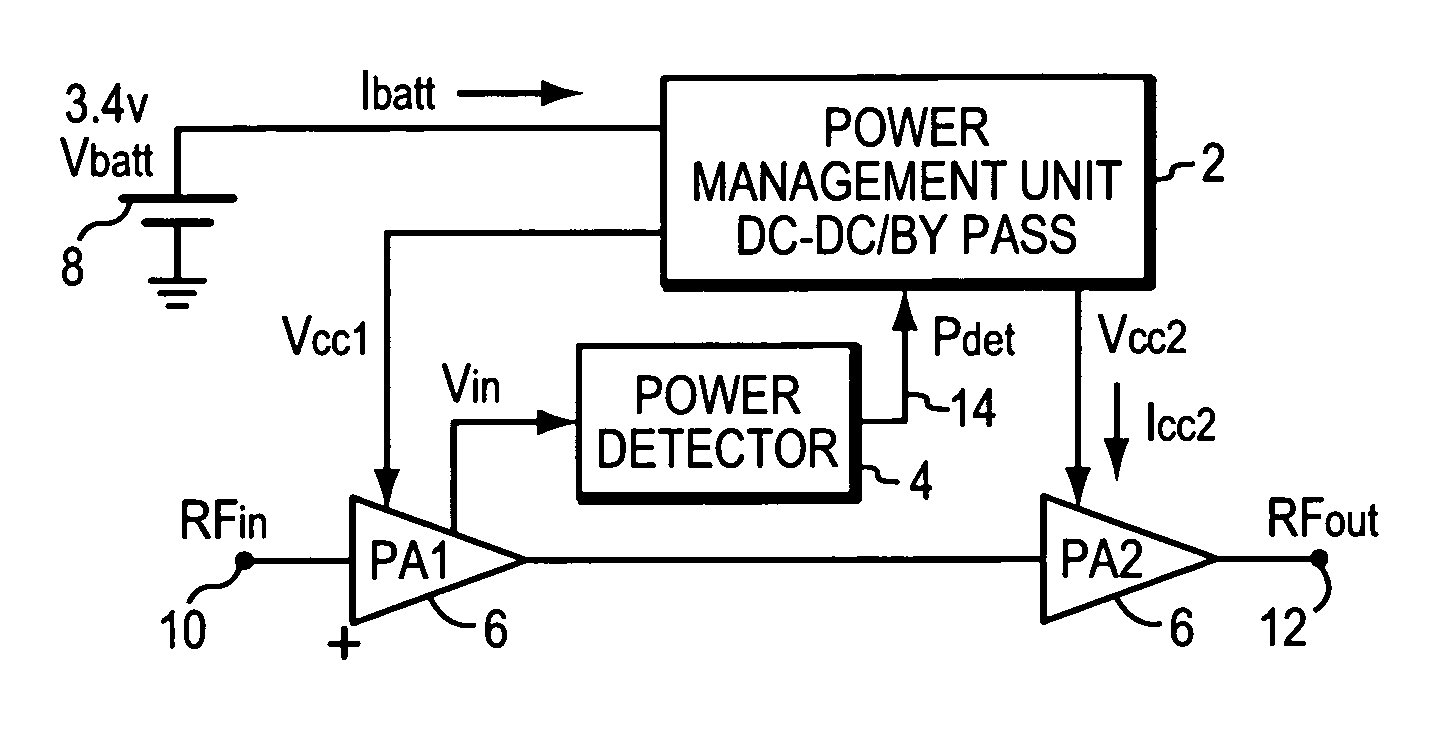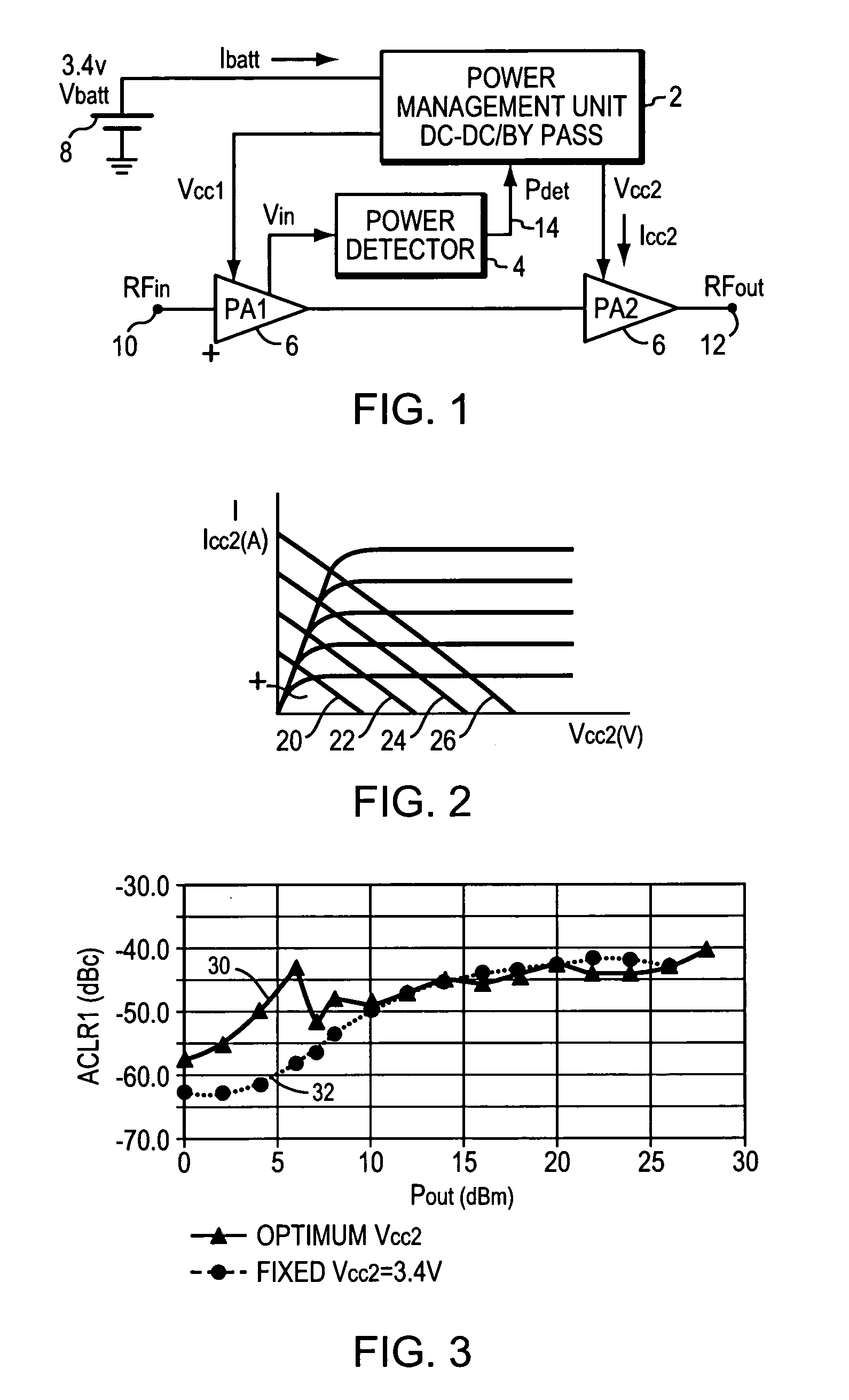Power amplifier with close-loop adaptive voltage supply
a voltage supply and power amplifier technology, applied in the direction of amplifiers, amplifiers with semiconductor devices only, amplifiers with semiconductor devices, etc., can solve the problems of shortening the handset talk time, increasing the current consumption of additional active components, and reducing the current consumption, so as to save battery life and reduce current consumption
- Summary
- Abstract
- Description
- Claims
- Application Information
AI Technical Summary
Benefits of technology
Problems solved by technology
Method used
Image
Examples
Embodiment Construction
[0032]FIG. 1 is a block diagram of a system employing the present invention and includes a power management unit 2, a power detector 4, a 3.4V battery 8, and two power amplifiers 6, PA1 and PA2. Consider the circuit of FIG. 1 is part of a handset that has just been turned on and has received a new RF control signal from a base station. In this case, the RFin signal 10 is changed to a level such that the circuit of FIG. 1 will deliver the optimum, pre-determined output power at the RFout signal 12 which corresponds to that particular RFin signal level. Vin is an RF signal sensed from the output of the first power amplifier PA1 that is input to the power detector 4. The power detector 4 outputs a DC voltage Pdet to a DC to DC converter in the power management unit 2. The DC to DC converter responds by providing optimum Vcc1 and Vcc2 to PA1 and PA2, respectively. In most instances Vcc1 equals Vcc2, but in other application these voltages may be different. The circuitry is powered from ...
PUM
 Login to View More
Login to View More Abstract
Description
Claims
Application Information
 Login to View More
Login to View More - R&D
- Intellectual Property
- Life Sciences
- Materials
- Tech Scout
- Unparalleled Data Quality
- Higher Quality Content
- 60% Fewer Hallucinations
Browse by: Latest US Patents, China's latest patents, Technical Efficacy Thesaurus, Application Domain, Technology Topic, Popular Technical Reports.
© 2025 PatSnap. All rights reserved.Legal|Privacy policy|Modern Slavery Act Transparency Statement|Sitemap|About US| Contact US: help@patsnap.com



